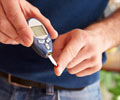Is walking good for diabetes? just a few minutes of light-intensity walking after a meal were enough to significantly lower blood sugar levels.
- Walking after a meal helps clear the mind and aids in digestion
- Just a few minutes of walking can activate these benefits
- Exercise boosts glucose uptake and aids muscle contraction which increases heart rate and respiration, thus sending more blood to working muscles
Recent research suggests a simple walk after a meal can help blunt immediate glucose spike after that meal and significantly lower overall levels of insulin, a hormone that helps our cells take up glucose but can be damaging if our bodies produce too much (1✔ ✔Trusted Source
The Timing of Activity after Eating Affects the Glycaemic Response of Healthy Adults: A Randomised Controlled Trial
Go to source).
Understanding The Link Between Exercise and Glucose
Exercise can boost glucose uptake by up to 50 times compared to when we are sedentary. At the tissue level, muscle contraction increases heart rate and respiration, which sends more blood to working muscles.At the cellular level, when your muscles contract or shorten, they’re able to take in more glucose through muscle membranes. At the molecular level, exercise changes the behavior of enzymes involved in glucose metabolism. With all of these mechanisms occurring simultaneously, our muscle cells enjoy the glucose they need to power a workout, and our blood glucose levels drop.
While your body typically needs to release insulin to get glucose into cells, exercise allows muscle tissue to absorb glucose without insulin. Reducing insulin secretion in response to glucose rises after meals is a good thing, as we want to keep insulin levels under control as much as possible(2✔ ✔Trusted Source
Walking and Diabetes
Go to source).
Walking After Eating: Is It the Right Time to Move?
The current body of evidence suggests that healthy people can reap the benefits of a post-meal walk for up to 6 hours after eating, but some people might have reason to exercise sooner.In a 2021 review of 51 studies published in Sports Medicine, researchers found that doing a single bout of at least 30 minutes of continuous cardio within 6 hours of eating decreased glucose and insulin levels in the six hours after a meal (the postprandial period) compared to being at rest (3✔ ✔Trusted Source
The Acute Effects of Interrupting Prolonged Sitting Time in Adults with Standing and Light-Intensity Walking on Biomarkers of Cardiometabolic Health in Adults: A Systematic Review and Meta-analysis
Go to source).
When you eat, glucose enters your bloodstream from your gut, raising the blood sugar concentration. But when you exercise right away, that glucose is quickly taken up by muscle tissue, bringing your blood sugar levels back down.
When you regularly choose to move after eating instead of spending hours at your desk or on the couch, you build a habit that supports metabolic health immediately and in the future.
References:
- The Timing of Activity after Eating Affects the Glycaemic Response of Healthy Adults: A Randomised Controlled Trial - (https://www.ncbi.nlm.nih.gov/pmc/articles/PMC6267507/)
- Walking and Diabetes - (https://www.diabetes.co.uk/walking-and-diabetes.html)
- The Acute Effects of Interrupting Prolonged Sitting Time in Adults with Standing and Light-Intensity Walking on Biomarkers of Cardiometabolic Health in Adults: A Systematic Review and Meta-analysis - (https://link.springer.com/article/10.1007/s40279-022-01649-4)
Source-Medindia
















